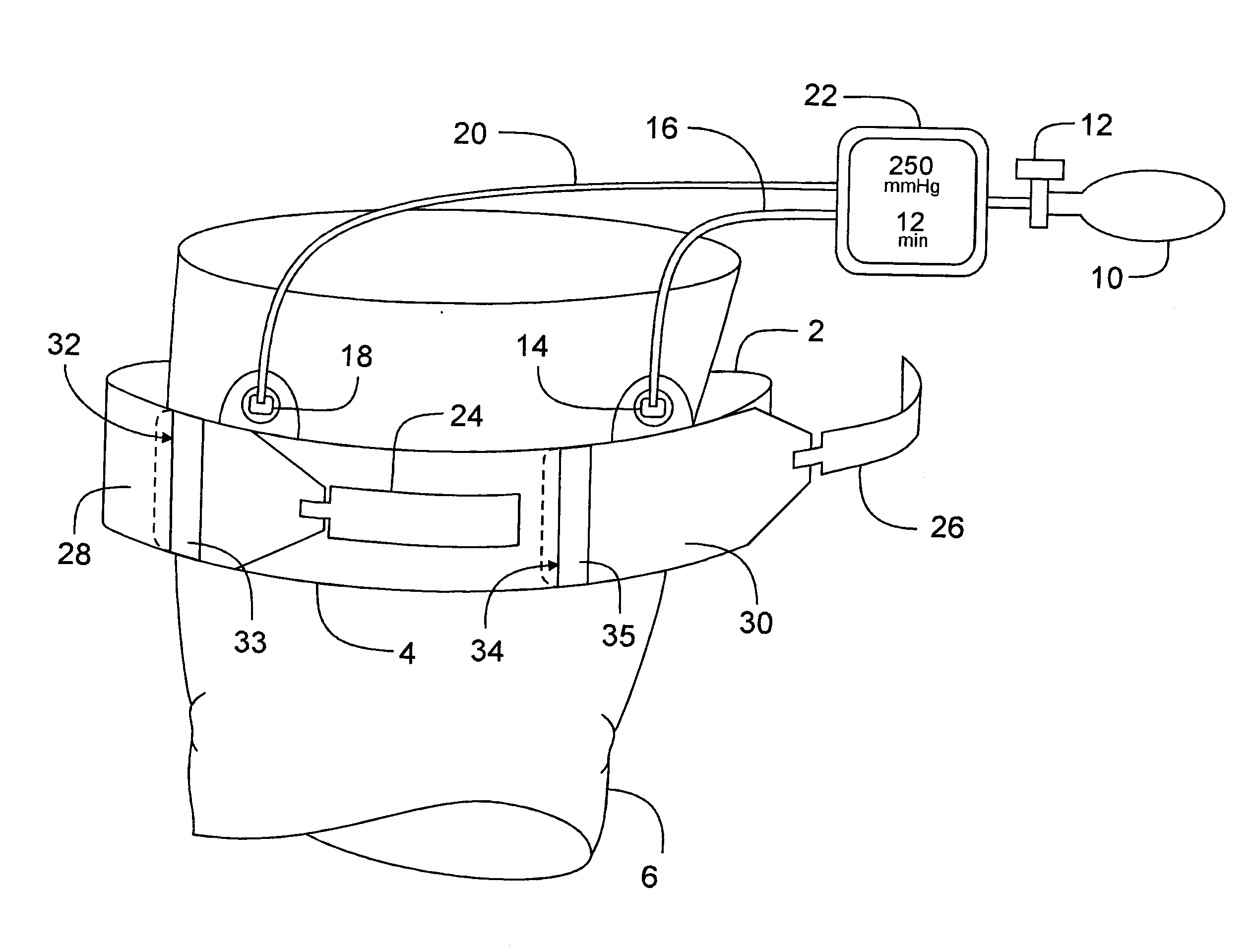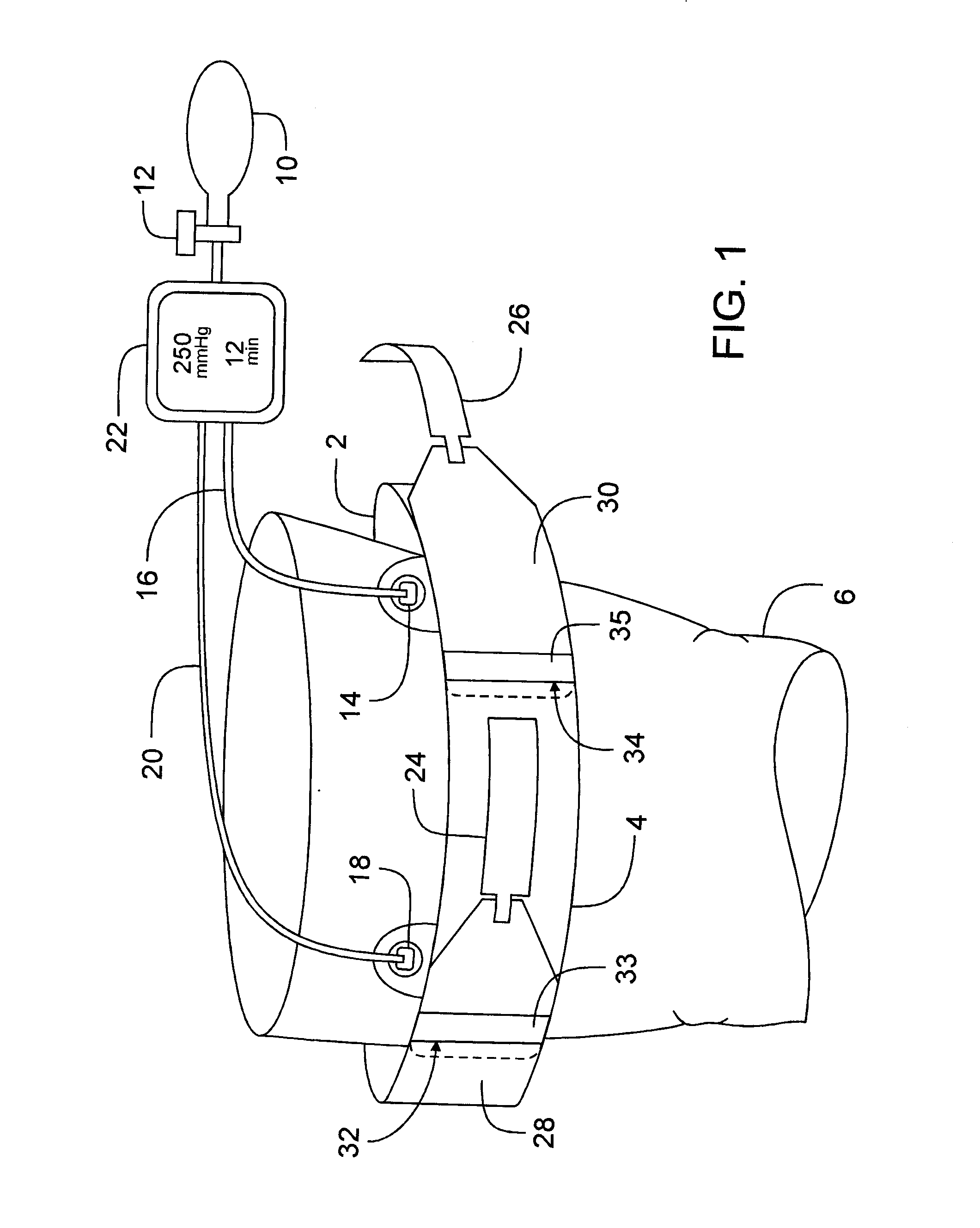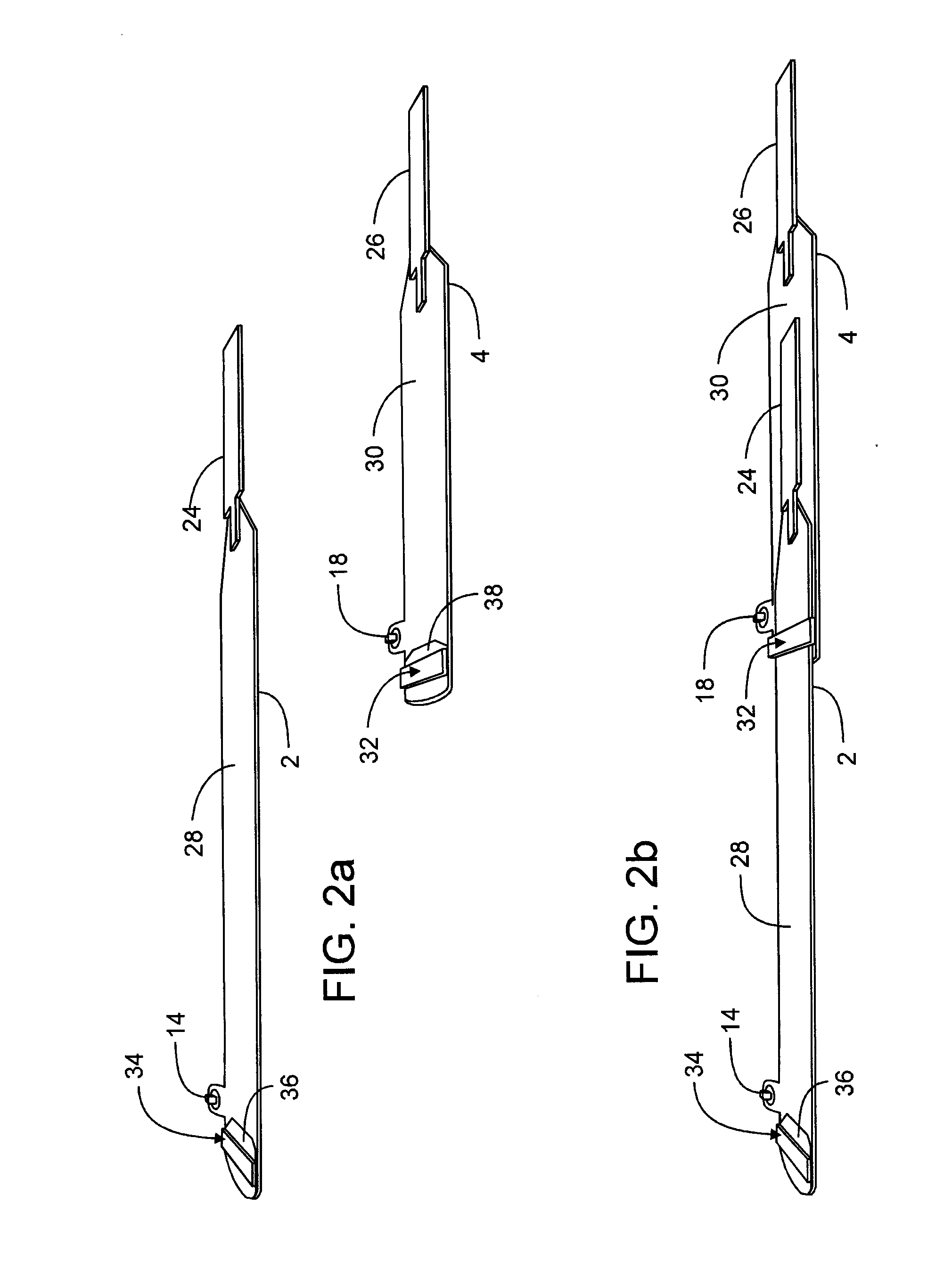Extendible Tourniquet Cuff with Stabilizer for Improved Utility and Safety
a technology of extension and stabilizer, which is applied in the field of surgical tourniquet cuffs, can solve the problems of overlapping, inflated portions of the cuff to move out of longitudinal alignment, unexpectedly alter the amount or uniformity of pressure applied to the limb, and not helping the user in properly aligning the overlapping cuff portions
- Summary
- Abstract
- Description
- Claims
- Application Information
AI Technical Summary
Benefits of technology
Problems solved by technology
Method used
Image
Examples
Embodiment Construction
[0020]A specific embodiment illustrated is not intended to be exhaustive or to limit the invention to the precise form disclosed. It is chosen and described in order to explain the principles of the invention and its application and practical use, and thereby enable others skilled in the art to utilize the invention.
[0021]Throughout this document the terms ‘bond’ and ‘bonded’ will generally refer to processes such as radio frequency (RF) welding, ultrasonic sewing and welding, other forms of plastic welding, adhesive bonding, or solvent bonding selected to be suitable for the materials and coatings chosen for the various components of the cuff. Width and thickness of the bonds are selected to produce a joint of sufficient strength to withstand the stresses produced by typical cuff inflation pressures up to 1000 mmHg at various limb circumferences, and in selected areas, to form a gas impermeable joint between the materials. The terms ‘seal’ and ‘sealed’ refer specifically to gas-tig...
PUM
 Login to View More
Login to View More Abstract
Description
Claims
Application Information
 Login to View More
Login to View More - R&D
- Intellectual Property
- Life Sciences
- Materials
- Tech Scout
- Unparalleled Data Quality
- Higher Quality Content
- 60% Fewer Hallucinations
Browse by: Latest US Patents, China's latest patents, Technical Efficacy Thesaurus, Application Domain, Technology Topic, Popular Technical Reports.
© 2025 PatSnap. All rights reserved.Legal|Privacy policy|Modern Slavery Act Transparency Statement|Sitemap|About US| Contact US: help@patsnap.com



